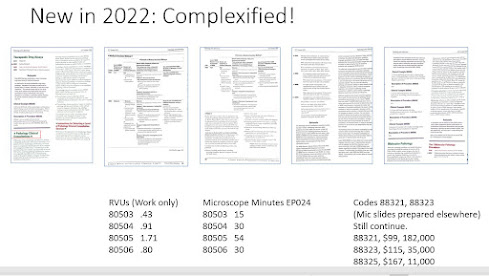Interesting headline from the press releases wire services - pairing deep content knowledge with investment plans.
_____
DeciBio Consulting Announces Debut Venture Fund,
DeciBio Ventures,
to Support Ground-Breaking Precision Medicine Companies
Press release here.
LOS ANGELES, Dec. 15, 2021 /PRNewswire/ -- DeciBio Consulting, LLC, a precision medicine-focused strategy consulting and market intelligence firm, has launched DeciBio Ventures. This venture capital and creation firm invests in and supports ground-breaking companies in the precision medicine space.
"We believe that technological improvements will drive the precision medicine revolution. Funding the most innovative companies in precision medicine is another step for us to help accelerate burgeoning advancements to improve human health," stated DeciBio Consulting's Co-Founder Stephane Budel, Ph.D."At DeciBio, we have always differentiated ourselves by our depth of expertise and close ties with industry players. With consulting services, data analytics and products, software products, and now venture capital, DeciBio is poised to support various stages in the commercialization journey.
In line with DeciBio Consulting's mission to accelerate precision medicine advancements, DeciBio Ventures aims to invest in start-ups across both tools and therapeutics. Portfolio companies will be able to leverage DeciBio Analytics' novel products, solutions, and services to gain differentiated, market-level insights.
"We continue to look for ways to support early-stage companies that are advancing precision medicine. DeciBio Ventures is the next step in that pursuit and represents another layer of support to help these companies commercialize the technologies that will drive future waves of innovation," added Miguel Edwards, Ph.D.
"DeciBio Ventures codifies our engagement and collaboration with pioneering early-stage companies transforming precision medicine and provides a strategic edge to these companies to ask bolder questions and seize on fertile, untapped science to tackle the most critical challenges in healthcare for patients," added Carl Schoellhammer, Ph.D.
About DeciBio
DeciBio Consulting (www.decibio.com) is the leading strategy consulting, market intelligence, and SaaS firm dedicated to accelerating the adoption and impact of technologies enabling precision medicine.
Headquartered in Los Angeles, California, DeciBio serves a global base of clients and customers, ranging from startups to Fortune 500 healthcare corporations. DeciBio offers advisory services for growth planning, market and opportunity assessment, product and portfolio strategy, voice-of-customer feedback, technology assessment, and commercial due diligence.
Contact:
Carl Schoellhammer
Ventures@DeciBio.com
310.451.4510























